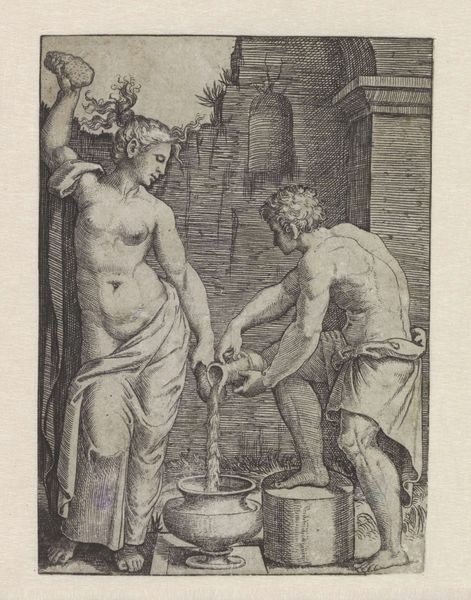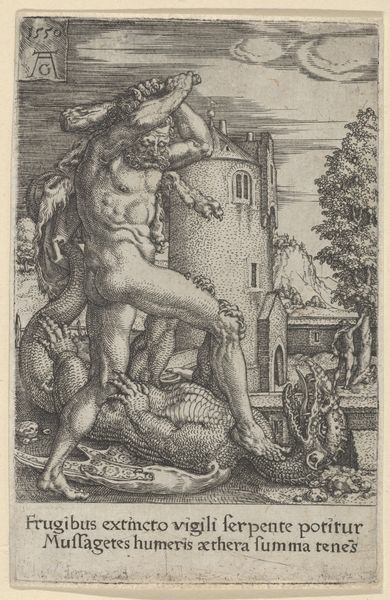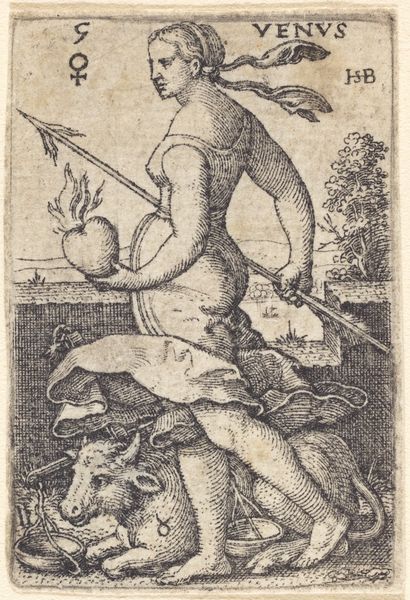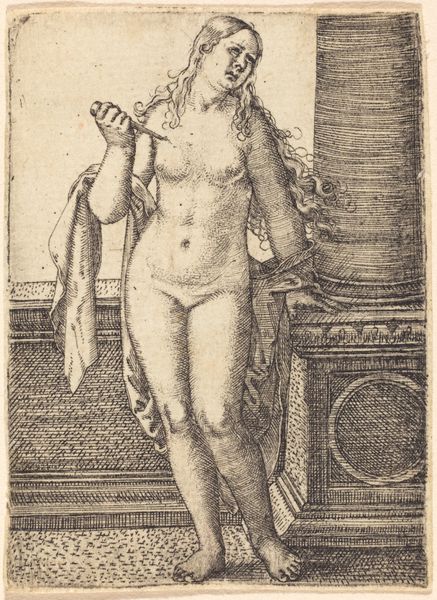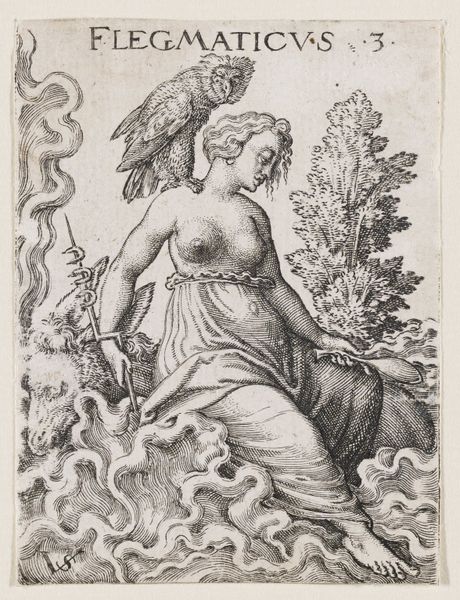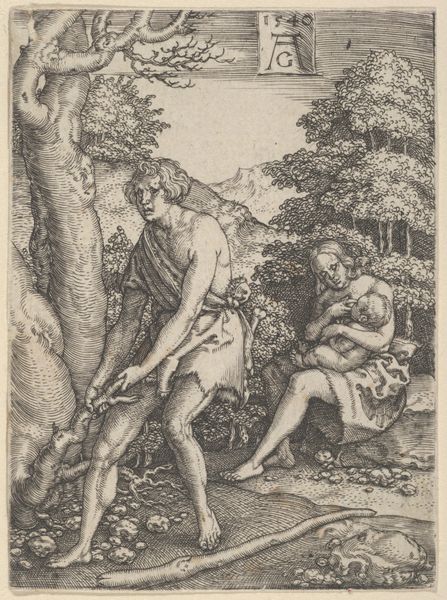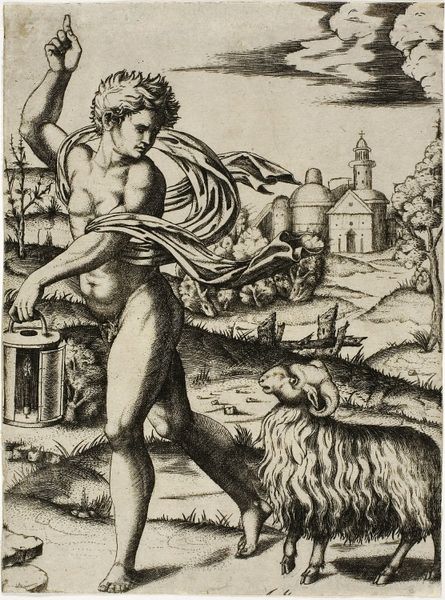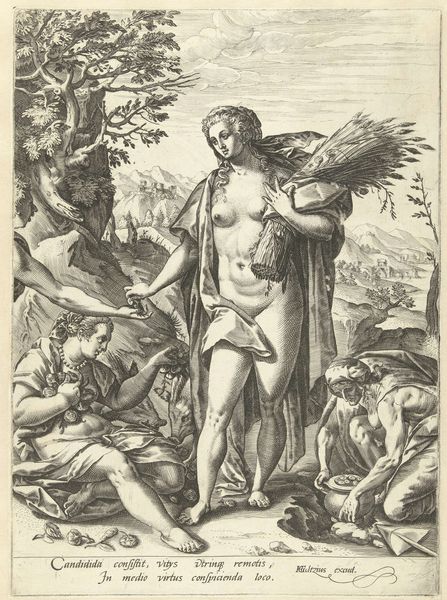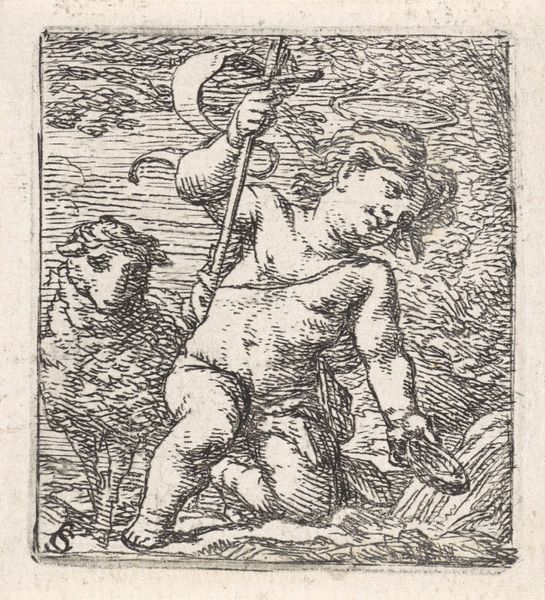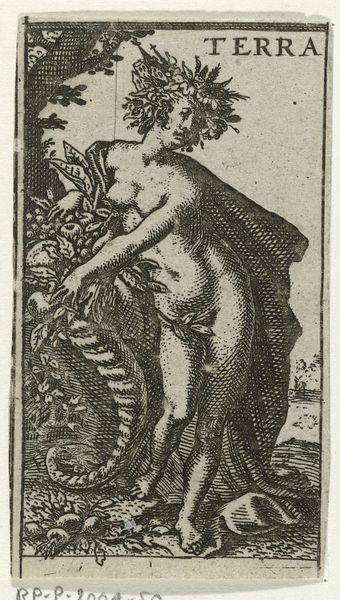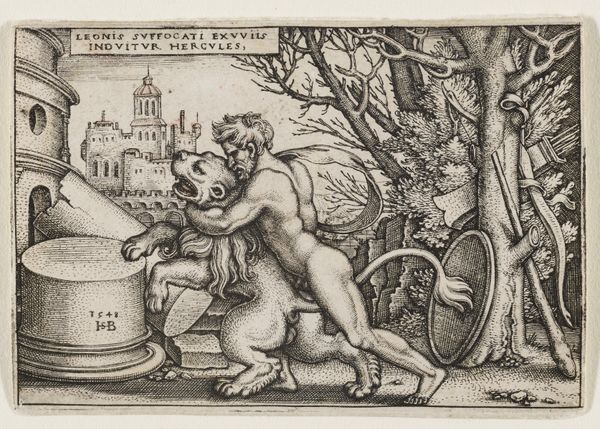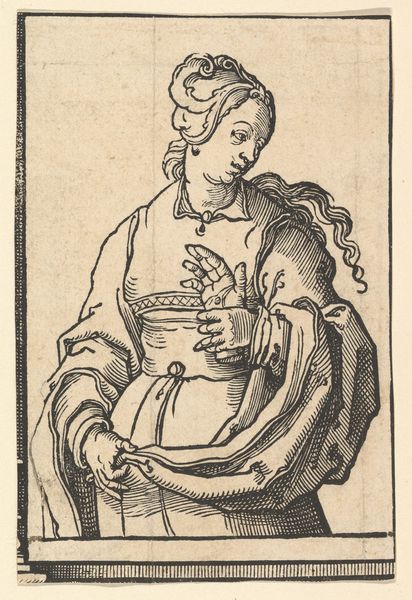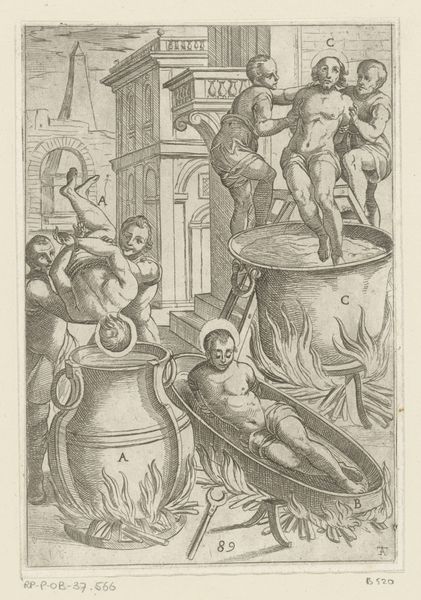
print, engraving
#
allegory
# print
#
mannerism
#
figuration
#
line
#
history-painting
#
engraving
Dimensions: 2 13/16 × 2 1/8 in. (7.14 × 5.4 cm) (sheet)6 1/16 × 16 3/4 in. (15.4 × 42.55 cm) (mount)
Copyright: Public Domain
Editor: So, here we have Virgil Solis' "Melancholic Temperament," an engraving from around the mid-16th century. It's so detailed for its size. I'm really struck by all the symbols—the compass, the animal figures. How do you interpret this work? Curator: It's crucial to examine Solis’ engraving through the lens of its material conditions and its historical context. How was this image reproduced? The labor of engraving on a metal plate allows for multiple prints, widening distribution and affecting how ideas about 'melancholy' spread. Consider the physical act: a craftsman meticulously transferring image to metal, a process governed by precise techniques within a workshop environment. Editor: That's interesting... So, you’re saying that the technique itself is significant in understanding the message? Curator: Precisely! This isn't simply about Solis' individual genius. Think about the social role of the printmaker, churning out copies for consumption. Were these prints affordable to the rising merchant class? The wide availability challenges older notions of artistic creation. Moreover, we can interpret that the compass suggests instruments of measurement and their physical relation to creating melancholy, connecting to the theme in unique ways. Editor: I never thought about it that way, about the accessibility of prints democratizing ideas, even emotions like melancholy. It changes how we view art of that time! Curator: Indeed. And don't ignore the materials. Engraving involves the interplay between metal, ink, and paper – all commodities within specific economic and social structures. The act of viewing is not isolated; it's part of a wider network of production and consumption. This image challenges the high/low art dichotomy, bridging craftsmanship and intellectual concepts. Editor: Thanks! I’m rethinking how materials and production change art's meaning and reach, especially beyond the artist's original idea.
Comments
No comments
Be the first to comment and join the conversation on the ultimate creative platform.
